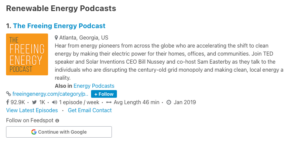Have you ever wondered why utilities don’t embrace clean energy more aggressively? While it’s true that some of them are resistant to change, there’s a bigger and more practical reason: energy from the sun and wind make managing the grid a whole lot harder.
Let me use a little metaphor to help explain the why clean energy is tough to manage.
One-way highway

You can think of the grid like a giant network of one-way highways (power lines), all radiating outward from a few large, centralized warehouses (power plants). Huge trucks carry the product (electricity) to countless consumers. Even small delays in deliveries are costly and impactful (outages).
In this metaphor, the role of utilities is to build warehouses, maintain highways, and schedule trucks. Utilities oversee these immensely complex logistics and, for the most part, they do a great job of getting products delivered on time. (Note: in deregulated markets, utilities just focus on trucks and/or highways and third parties build the warehouses).
GET MONTHLY NEWS & ANALYSIS
Unsubscribe anytime. We will never sell your email or spam you.
This model has remained largely unchanged for a century. Utilities have spent that time fine-tuning and perfecting it. For a very long time, everything was great. Warehouses were the right size, trucks ran on time, and customers were pretty satisfied.
But then, almost overnight, something happened. Clean energy showed up. Power from the sun and wind is cheap and clean but it can’t be switched on and off according to a schedule. Clean energy blows the traditional model of managing the grid out the window.
Stop and go traffic

Trucks no longer run continuously (wind dies down). Some of them just stop, randomly, in the middle of the highway (clouds cover solar panels). And, for the first time, many trucks refuse to drive at night (solar).
A lot more trucks

As if clean energy weren’t tough enough, distributed energy from wind farms, microgrids, and community solar makes highway traffic far more complex. There are more trucks and many of them are smaller. Products are no longer shipped in just one direction. Sometimes customers are sending products back to the warehouses and sometimes, customers are sending products between each other. This complexity makes it far more challenging for utilities to ensure that every customer gets exactly the amount of product they need exactly on time.
No longer just trucks

Since most distributed energy power plants are also a lot smaller than their large, centralized brethren, the highway starts to fill up with more than just trucks. Bicycles (community solar and microgrids) and pedestrians (residential solar) are starting to use the same highways. It gets so complicated, some utilities can’t keep up with with the chaos.
Fortunately for all of us, the number of people on the highway today is still small enough that utilities can continue using their tried and true logistics models with just a few tweaks… at least for now.
A new world is coming and utilities will need to reinvent their models
As we progress towards a world powered by clean energy, those metaphorical highways will be overflowing with big trucks, small trucks, bicycles, and people. The logistics will become increasingly complex. If we don’t step up and manage them, we risk undermining the reliability of the grid.
Fortunately, there is a way to manage all this. We can tame the complexity, lower our costs, and improve reliability – all at the same time. The solution is already familiar to all of us. It’s called digital technology – computers, software, and sensors. The grid was built and perfected long before computers were invented. It’s now overdue for a 21st-century upgrade.
It’s never easy or risk-free to reinvent an industry but computers have a long track record of doing it successfully. Digital technology elevated telephony from mechanical switchboards to instant phone calls across the world. Digital technology reinvented retail logistics and healthcare delivery. Digital technology is behind the ever decreasing costs in manufacturing.
The introduction of computers not only revolutionized industries like these, it also created vast new business opportunities for those organizations willing to embrace innovation. Companies like Cisco, Google, Apple, Walmart, and Amazon were all born as innovators introduced digital technology into traditional industries.
Utilities are starting to put 21st-century technology into the grid but they are moving cautiously because the risks of getting it wrong are high. Whether you are a fan or a critic of utilities, the fastest path to clean energy requires their active participation. Only by understanding the unique challenges they face can we expect to accelerate the pace digital technology and, in turn, get to clean energy more quickly.



